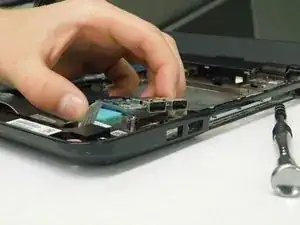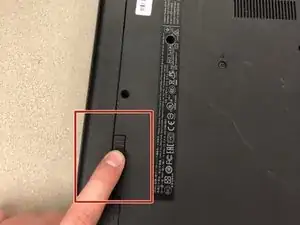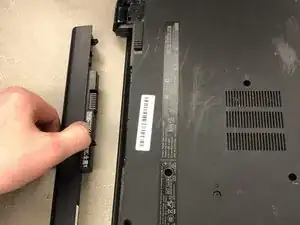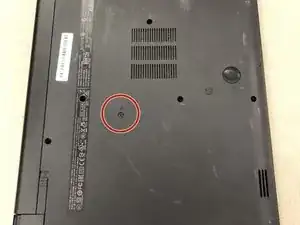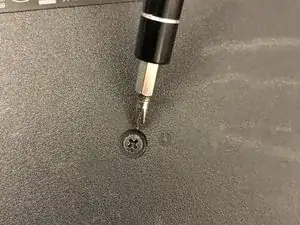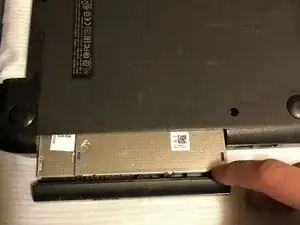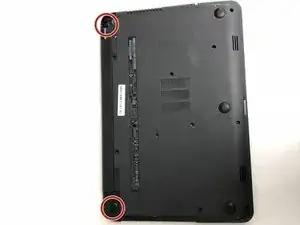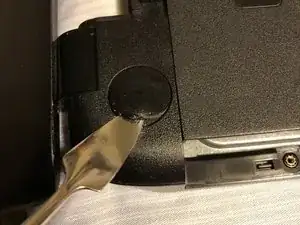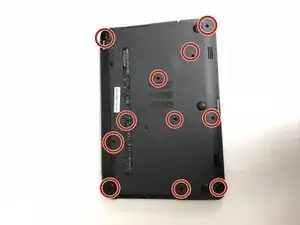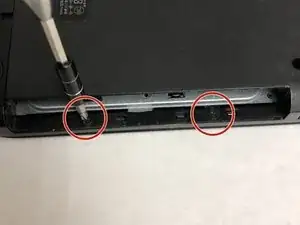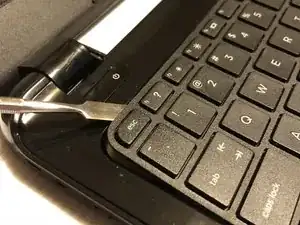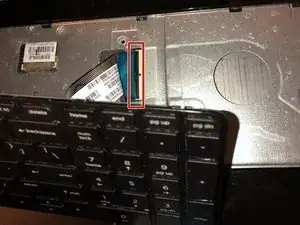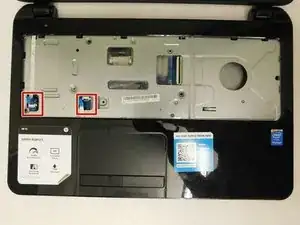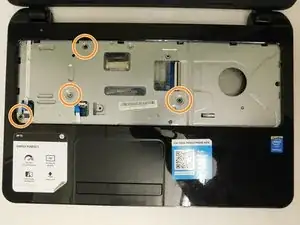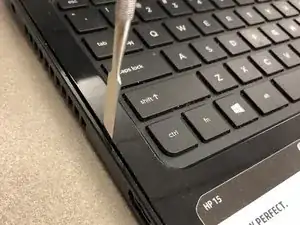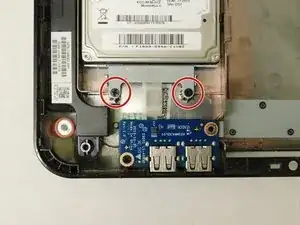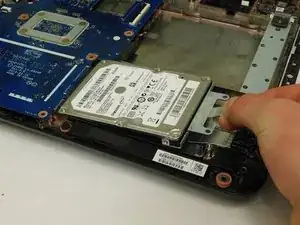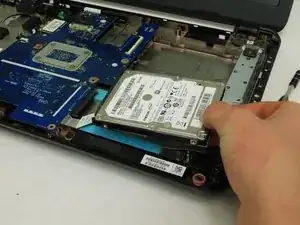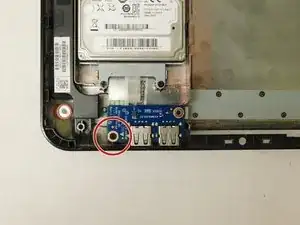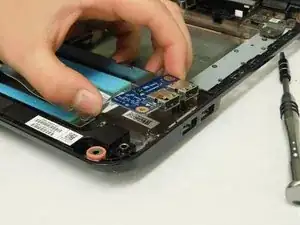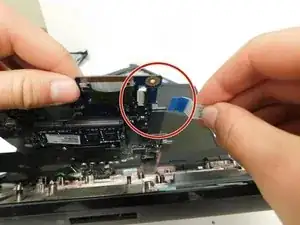Introduction
A USB port can be diagnosed as faulty when the computer no longer detects when a device is connected via USB. Ensure the USB connections are free of debris before declaring the port as faulty.
Tools
-
-
Eject the battery from the computer by sliding the two clips on the bottom of the computer toward the center of the computer.
-
Slide the battery out as shown in the picture.
-
-
-
Using a Phillips #1 screwdriver, remove the small screw next to the disc engraving shown in the picture.
-
-
-
Locate the two corner grips on the hinge side of the computer.
-
Using a metal spudger, remove the two corner grips to reveal the screws.
-
-
-
Using a spudger, pry around the edges of the keyboard until all clips are disengaged and the keyboard is loose from the computer.
-
To disconnect the ribbon connector, flip up the black clip shown in the picture.
-
Gently pull the ribbon until disconnected.
-
-
-
Disconnect the other two ribbon connectors underneath the keyboard by fliping up the black clips.
-
Remove the 4 small screws shown in the picture.
-
-
-
Disengage the face plate clips by prying the case away from around the outer edge of the face plate with a metal wedge.
-
The face plate can then be lifted away from the computer.
-
-
-
Gently slide the hard drive away from the motherboard to disconnect it.
-
After it's disconnected, lift the hard drive up to remove it from the computer.
-
-
-
Under the motherboard, disconnect the wire that runs to the USB chip.
-
You may need to pull or wedge the wire up from the case as a section of it is glued down.
-
To reassemble your device, follow these instructions in reverse order.
